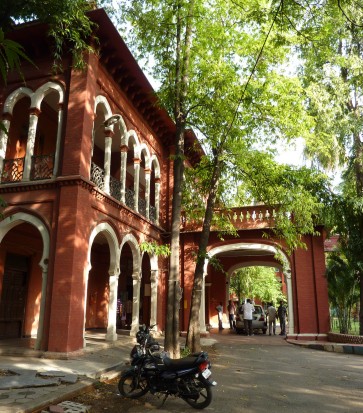ECAF Fellowship report from Dr. Tara Puri, Global Research Fellow, Institute of Advanced Study/ Department
of English, University of Warwick
I was awarded a BASAS and British Academy ECAF Visiting Fellowship to research Indian women’s magazines at the beginning of the 20th century. The award allowed me to spend 11 weeks in India, visiting the Nehru Memorial Library and the Marwari Library in Delhi, the Tamil Nadu State Library and the Roja Muthiah Research Library in Chennai, as well as the Sound and Picture Archives for Research on Women (SPARROW) in Mumbai.
The last decades of the 19th century saw an emerging feminist consciousness in India that was closely linked with a number of women-led movements and organisations, as well as women’s increasingly visible role in the independence movement. I aimed to study these developments by focusing on women’s magazines. Though women’s magazines existed in India in the latter half of the 19th.
century, these were few and far-between; only at the beginning of the 20th century did women’s magazines begin to emerge as an important and viable part of popular print culture. During this trip, I worked on a group of magazines in Hindi and English from 1900-1914, focusing on their writings on women’s selfhood, education and work. My work addressed three key questions: 1) How do Indian women’s magazines at the beginning of the 20th century show a sense of shared experience as well as a feminist consciousness? 2) How do these magazines respond to the idiom and format of British women’s magazines (including missionary magazines), putting it to use in expressing a new and hybrid identity and expression? 3) How do they reflect upon British women in India, as well as Englishness in the context of the Indian nationalist movement?
During this trip, apart from locating and surveying a range of different periodicals from the period, I was able in particular to focus on two magazines, Bharat Bhagini in Hindi and The Indian Ladies’ Magazine in English. The length of my stay in India made it possible for me to read carefully these publications, and get a sense of their relationships to larger networks of print culture as well as their own internal developments. This fellowship was also an excellent opportunity for me, as an early career researcher, to not only undertake an extended period of archival research but also to establish links with other Indian researchers and academics especially in Delhi University, where I presented a paper based on this research in early September. At the moment, I am in the process of writing a journal article and drafting a preliminary chapter for a monograph based on this research. Additionally, I will be presenting a paper based on this work at the annual conference of the North American Victorian Studies Association in November 2014.

